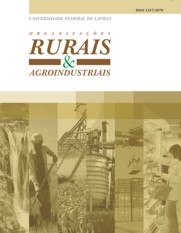Wage Gap Within the Brazilian Forest Sector
Keywords:
Oaxaca-Blinder Decomposition, Gender, RaceAbstract
In 2018, the Brazilian forest sector supported about 3.8 million direct and indirect jobs. Considering the importance of the sector for the Brazilian economy, this paper addresses the existence of gender and race/color wage discrimination in the labor market within the sector through Oaxaca-Blinder decomposition. Data was drawn from the 2015 national households survey PNAD and analyzed through the Stata 14 software. Both the agricultural and industrial branches of the sector were analyzed in separate, with evidences of a possible discrimination being found on the sector as a whole. We found that the gender returns’ difference in productive characteristics is stronger within the industrial branch (169.9%). However, when analyzing the color/race difference, the characteristics effect outweighed the price effect on explaining the earnings gap.


